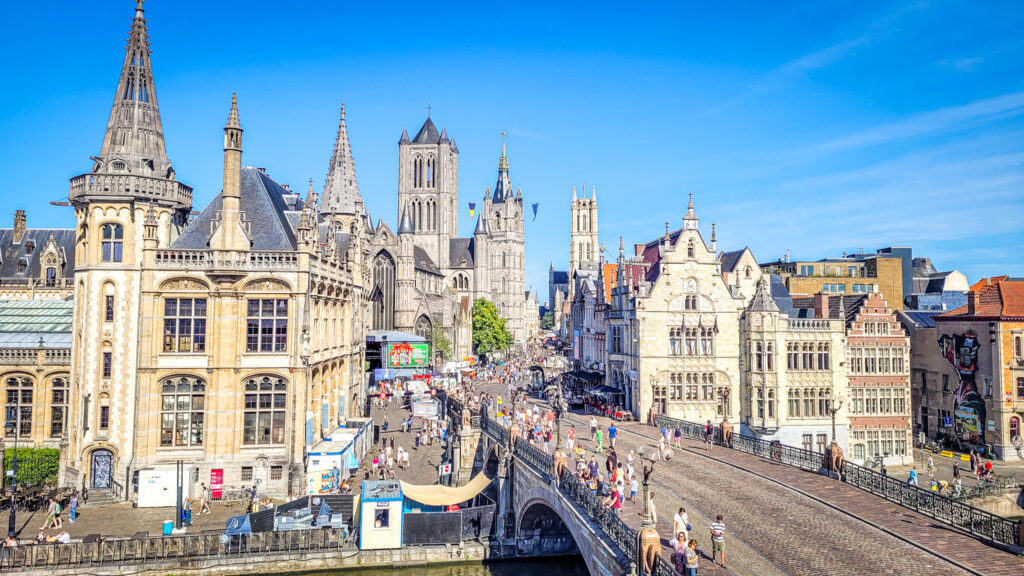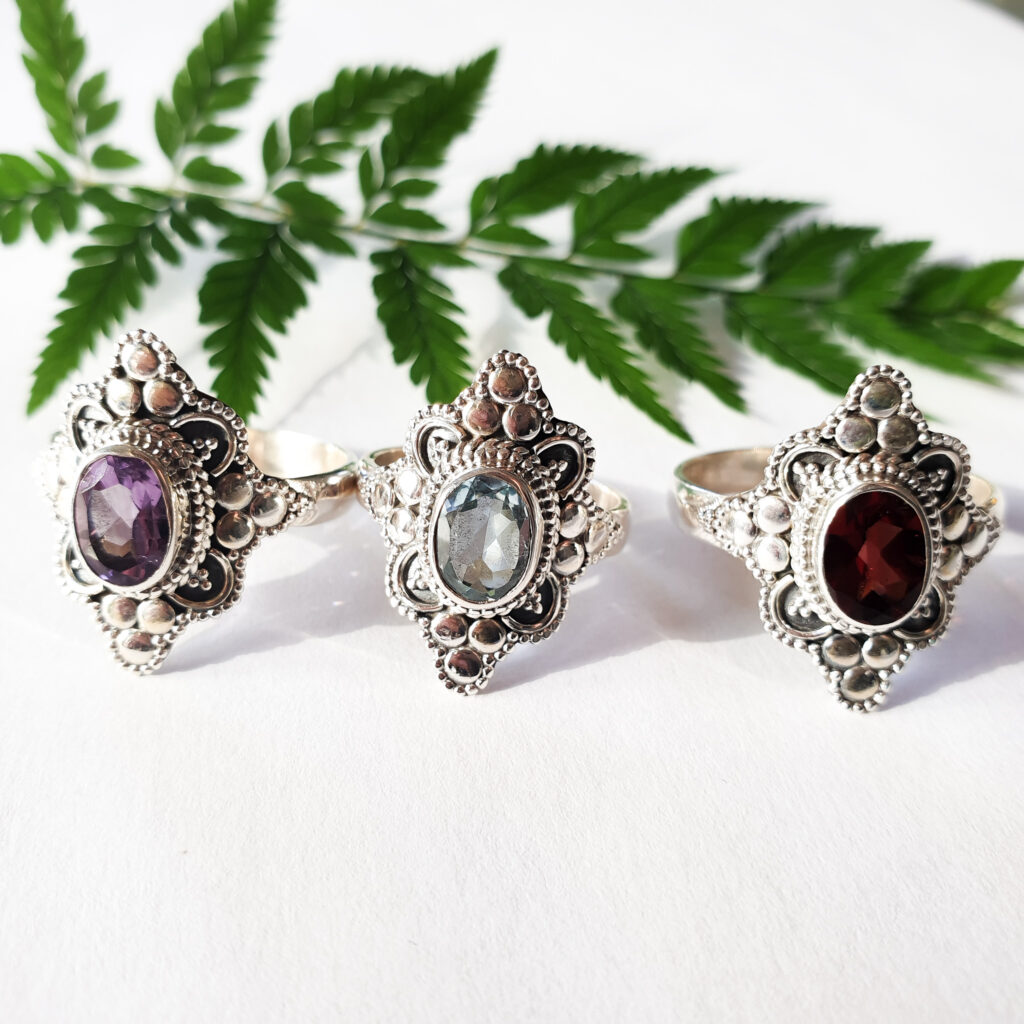Visiting Belgium is never complete without exploring the beautiful city of Ghent. One of the city’s prominent landmarks is the Castle of the Counts. It’s a breathtaking castle that has of an impressive history and remarkable architecture. The castle was built in the 12th century and has since been a symbol of power and strength for Ghent. So let’s explore the monumental highlights to visit in Ghent.
Ghent is the capital city of East Flanders in Belgium. The city offers an enchanting blend of history, architecture, and culture. With a history that dates back to the Middle Ages, the city’s skyline has impressive monuments that pay tribute to its glorious past. An itinerary spanning two days is perfect to explore the heart and soul of this charming city.
Table of Contents
City Hall
The City Hall of Ghent was constructed between 1482 and 1507. The building has four surrounding wings along the rectangular courtyard. The building’s exterior consists of a plethora of intertwined statues, delicate tracery, and ornate carvings that are sure to capture your attention. With its Gothic and Renaissance design, it’s reminiscent of a fairytale castle, and one cannot help but appreciate its engineering.
The hall’s interior is equally impressive, with intricate decorations, arches, and buttresses that reflect the building’s long history and elegance. The Gothic Chamber, the primary meeting room, is renowned for its vaulted ceiling and oak walls. The chamber is where the town council meetings are held, including overseeing the fair appointment procedure every seven years.

Belfry of Ghent
The Belfry Tower was built in 1313, located in the centre of Ghent’s market square. This architectural marvel stands at 91 meters tall and was once a symbol of freedom in the Middle Ages. The tower consists of three distinct sections and the bells of the carillon tower are the pride of the city. The first section was originally designed to be a market hall, while the second was used to keep important city documents and ledgers. Finally, the third part of the tower was used to keep the city’s valuable records and the firing of a cannon in emergencies.
As impressive as the Belfort Tower’s height is, it is the intricate architecture that makes it stand out. The tower has a unique octagonal shape, which was necessary to provide structural support while allowing for open spaces throughout the building. Notice the blend of different architectural styles, such as Gothic, Romanesque, and Renaissance, each added at various periods. The tower’s distinct look is attributed to the enhancements added during two centuries of ongoing renovations.
Ghent has a rich history of brewing beer, and it’s no surprise that the Belfort’s base includes Het Groot Vleeshuis, which once housed a meat market. Today, it is a craft shop that invites you to try local delicacies, such as beer, cheese, ham, and chocolate.
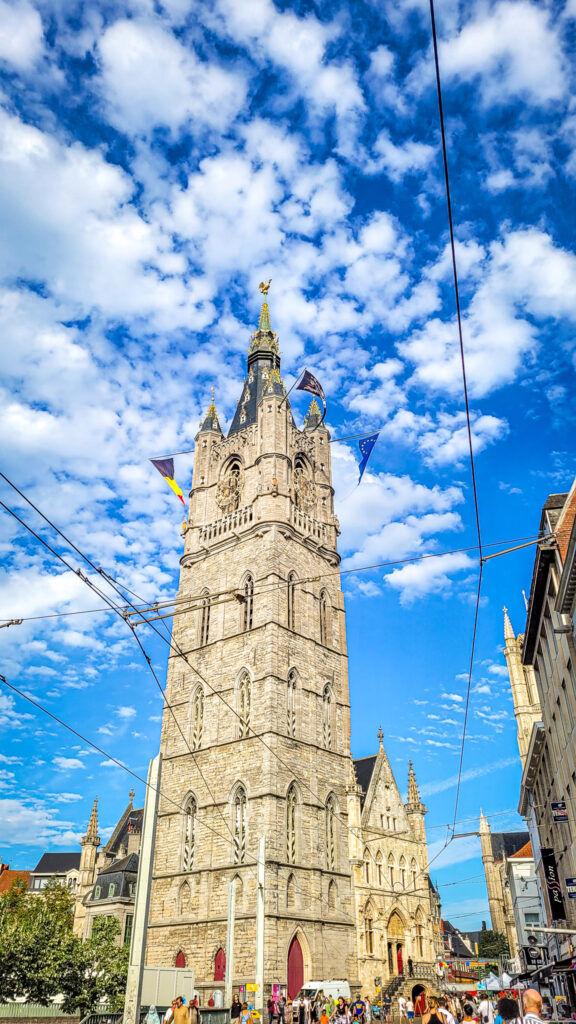

Saint Bavo’s cathedral
The history of Saint Bavo’s Cathedral dates back to the 10th century when a small Romanesque chapel was built on the site. Over the centuries, the chapel was transformed into a Romanesque church and later into a Gothic cathedral. The cathedral has undergone many alterations and renovations over the centuries, but its original structure still stands solid and proud. Did you know that during the Middle Ages, the cathedral was the tallest building in Ghent? It was considered a symbol of the city’s power and wealth.The Saint Bavo’s Cathedral is still the largest church in Ghent. It’s a glorious example of Gothic architecture in Belgium.
Saint Bavo’s Cathedral has several remarkable features that leave visitors in awe. The most notable feature of the cathedral is its towering spire, reaching up to 89 meters high and visible from almost every corner of the city. Inside the cathedral, visitors can admire the richly decorated altar, the intricate stained glass windows, and the breathtaking pulpit. The pulpit is created in the 17th century and renowned for its intricate woodcarvings. Visitors can also see the famous painting by the Flemish master Jan van Eyck, the Mystic Lamb, which is housed in a special chapel of the cathedral.
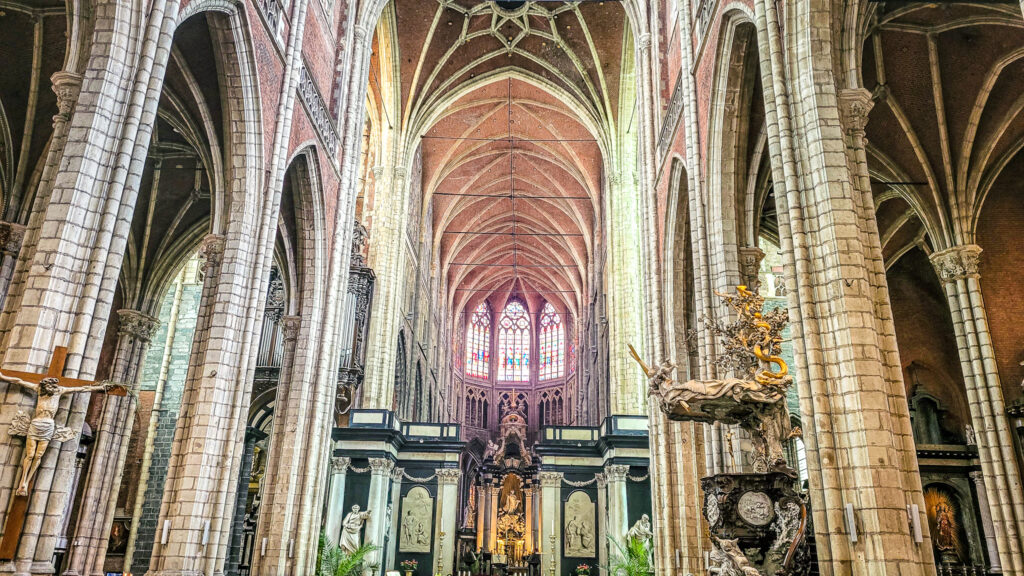
The Bells of Saint Bavo’s Cathedral
Of particular interest to visitors are the cathedral’s historic bells. Saint Bavo’s Cathedral has a set of 54 bells, the largest carillon in Belgium, and the second largest in Europe. The largest one is Amsterdam’s Royal Palace carillon. The bells were cast at various times between the 17th and 20th centuries, and each has its unique sound. Some are dating back to the 17th century. Visitors can hear the bells chime throughout the day and can even experience the extraordinary sound of the carillon during the weekly recitals performed by the city’s most talented bell-ringers.
Saint Bavo’s Cathedral is open to visitors all year round, with the exception of certain holidays, and guided tours are available in several languages. Visitors can take a stroll around the cathedral’s lovely gardens and sit for a while in the serene ambiance, taking in the beauty and grandeur of this magnificent architectural wonder.
Saint-Nicolas church
The story of Saint-Nicolas Church goes back to the 10th century when it was originally built as a small chapel dedicated to Saint Nicholas. Over the years, the church has undergone several transformations, with different parts added to the original structure in various architectural styles. However, the most noteworthy changes to the church were carried out between the 13th and 15th centuries when it was rebuilt as a grand Gothic-style church. The church has some remarkable features, including the towering spire, intricate arches and detailed carvings. It’s a true testament to the incredible craftsmanship of artisans of that era.
One of the standout architectural details of Saint-Nicolas Church is the stunning Baroque pulpit, which was added in the 17th century. Carved from wood by the renowned artist Jan Van Delen, the pulpit depicts scenes from the life of Saint Nicholas and is decorated with intricate details and beautiful gold leaf decorations. Another extraordinary feature is the church’s impressive organ, which was built in 1883 and is considered one of the finest organs in Belgium. The organ’s intricate carvings and rich sound make it a must-see attraction for music lovers.
In addition to its remarkable architecture, Saint-Nicolas Church also has an interesting history. During the French Revolution, the church was used as a barracks and army storehouse. Later, it served as a Protestant temple before being returned to the Catholic Church in the mid-19th century. The church is still an active place of worship. It draws visitors from all over the world who come to admire its beauty and learn about its history.
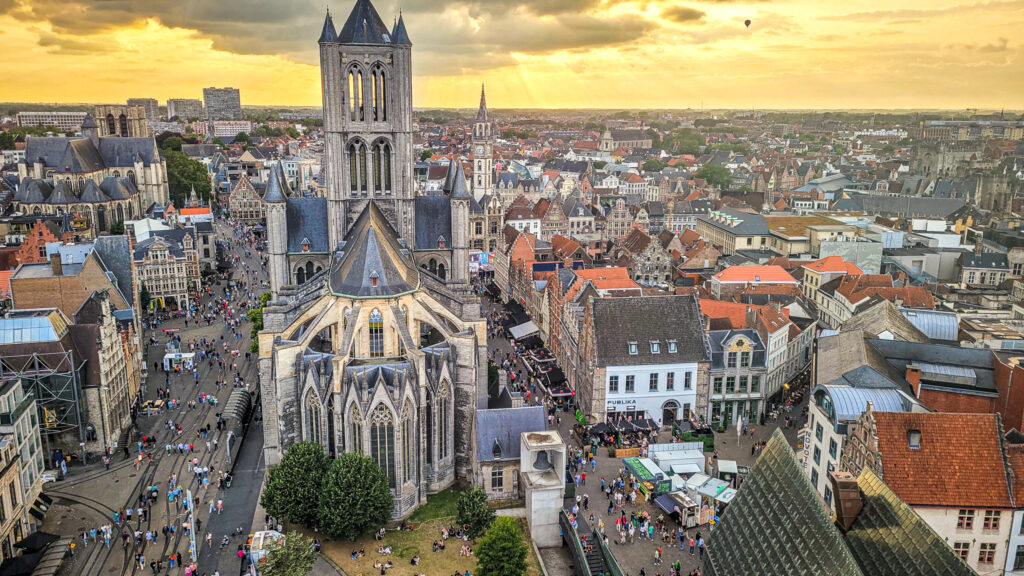
Saint Michiels bridge
The Saint Michiels Bridge, also known as the Saint Michael’s Bridge. The bridge is a unique architectural masterpiece that spans the picturesque river Leie in the heart of Ghent. Designed by Gustave Magnel and built between 1903 and 1905, the bridge is an iconic symbol in the city. The bridge is made of reinforced concrete, which was an innovative technology at the time. It’s designed with elegant art-nouveau lamps and ornate balustrades.
The Saint Michiels Bridge is not just a work of art but also has a rich history that reflects Ghent’s past. The bridge got its name from the nearby Saint Michael’s Church, which was crucial to the city’s religious life for centuries. During World War I, the bridge was partially destroyed, and it took several years to restore it. It also went through a series of modifications and restorations in the following years due to natural disasters and changing transportation needs.
Apart from its stunning views, the Saint Michiels Bridge also hosts various cultural events throughout the year, such as the annual Ghent Lichtfestival. During this event the bridge comes alive with a breathtaking display of lights and colours. There are also several festivals, art exhibitions, and musical performances that take place on or near the bridge.
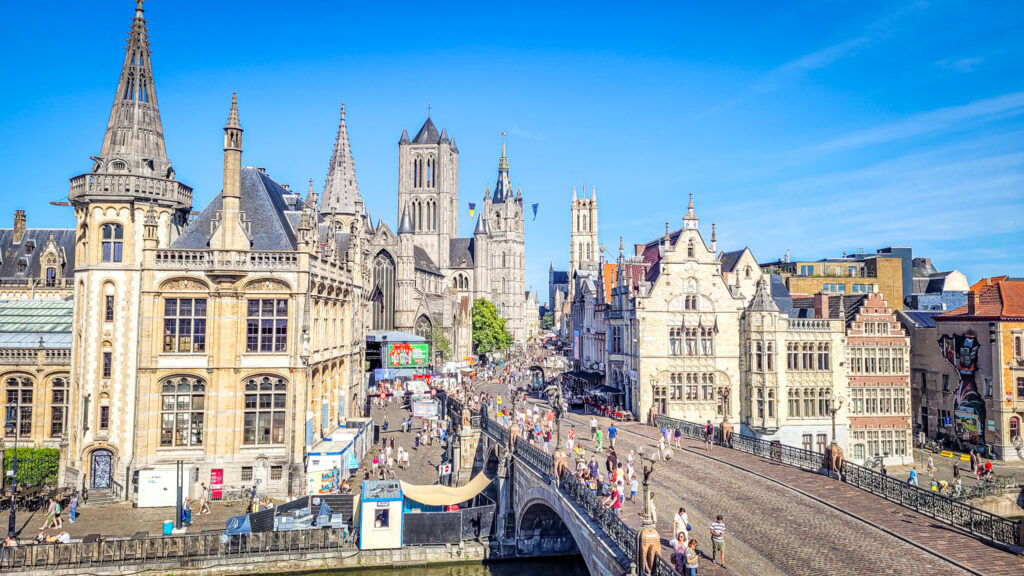
Saint Michiels Church
The construction of Saint Michiels Church began in the 14th century, and it took the builders over 100 years to complete. The church is characterized by its striking spire. With the 76 meters spire it’s one of the tallest structures in the city.
One of the most impressive features inside the church is its towering nave, which spans over 80 meters in length, making it one of the longest medieval naves in Europe. Visitors can marvel at the intricate Gothic architecture from the central nave, from where they can see the soaring arches, ribbed vaults, and a series of stunning stained-glass windows. The overwhelming beauty is enhanced with the light that filters through the windows, creating a magical atmosphere that is truly breathtaking.
While the architecture of Saint Michiels Church is unquestionably stunning, visitors will find it hard not to notice the impressive collection of artworks that decorate the interior. Visitors can find many paintings, sculptures, and religious artifacts, which have been preserved and restored throughout the centuries.
Another fascinating aspect of Saint Michiels Church is the mysterious and dark dungeons that are hidden beneath the church. Visitors can descend down the narrow staircase to reach the crypts and have a closer look at the church’s fascinating history. The dungeons are filled with historical artifacts and plaques, offering visitors a glimpse into the lives of the people who built and maintained the church over the centuries.
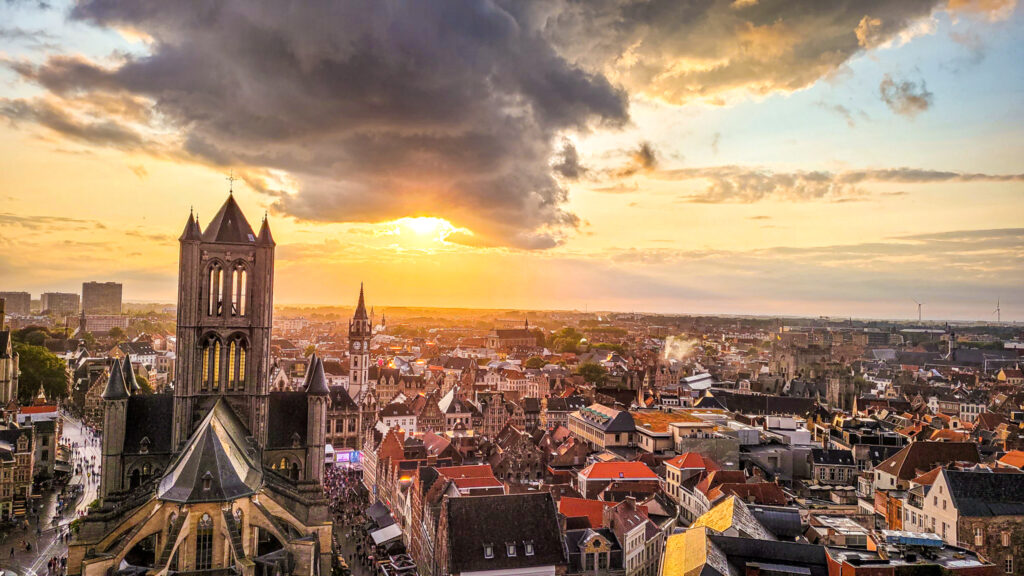
The Castle of the Counts
The Castle of the Counts is a castle that has stood the test of time. It has been through multiple renovations and repairs over time. The castle was built in 1180 by Count Philip of Alsace as a testament to his power and authority. It served as the home of the Counts of Flanders for centuries and was later used as a prison and courthouses in the 19th century. The castle today is a museum that displays its rich history for visitors to learn from.
Stepping into the Castle of the Counts will take you back in time to the Middle Ages. You can climb up the spiral staircases, walk within the walls, and get a breathtaking view of the city from the top. The castle also has a collection of medieval torture devices that were once used to punish criminals. The museum has a vast collection of artifacts representing the castle’s history, including weapons, garments, and pottery.
The structure’s architecture is one of the most fascinating features of the Castle of the Counts. It has a moat around it that was once filled with water, making it a formidable fortress. The castle walls are made of grey sandstone and have arrow slits and battlements. The castle’s facade has sculptures that resemble mythical creatures such as griffins, which add to the castle’s beauty and symbolism.
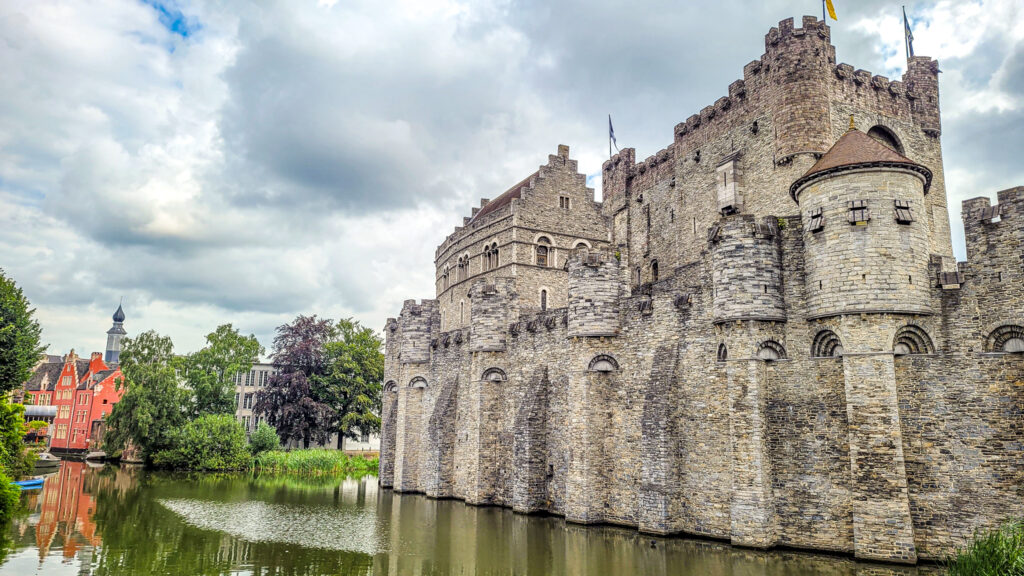
Patershol
Other monumental highlights to visit in Ghent are the Patershol neighbourhood and squares. Tucked away in the city’s historic centre, this place is bursting with charm and character. Patershol is a quaint, cobbled street quarter comprising winding alleys, colourful townhouses and wonderful places to eat.
Patershol’s historical legacy is fascinating. It was first mentioned in the 13th century, when the Dominican monks established a convent in the area. The neighbourhood continued to flourish in the Middle Ages, with textile production playing a significant role. However, it went through a period of decay in the 19th century until it was revived during the 1970s.
One of the highlights of Patershol is its food scene. The neighbourhood is home to some of the finest dining establishments in Ghent, serving up a variety of cuisine. From traditional Belgian dishes to fusion cuisine, you’ll be spoilt for choice. A must-try is the famous Flemish stew, which can be delicious.
Walking through Patershol’s picturesque streets is an experience of its own. The area’s colourful facades, lovely gardens, and stunning architecture will leave you in awe. Be sure to bring your camera along; you’ll want to capture every moment. Walking tours are also available, where you’ll learn about the neighbourhood’s history.
If you’re looking for some adventure, then head to the Korenmarkt Square, located in the heart of Patershol. This lively plaza attracts visitors with its street performers, cafés, and bars. You can also take a boat tour along the river Leie, offering breath-taking views of the city’s skyline. In the evening, the neighbourhood comes to life with its lively bars and pubs, providing you with a chance to party the night away.
Saint Peters Abbey & gardens
The Saint Peters Abbey, also known as Sint-Pietersabdij in Dutch, was established in the 7th century by Amandus, a bishop. The Abbey was just a small chapel, but it grew in size and popularity over the years. It was eventually destroyed in the 9th century by the Vikings and rebuilt in the 10th century. Over the next few centuries, it was expanded and renovated several times to accommodate more residents and to reflect changing architectural styles.
Architecture
One of the highlights of the Abbey is its breathtaking architecture. The Gothic-style church, which was built in the 13th century, is the most impressive part of the complex. The church has stained glass windows, intricate wood carvings, and impressive vaulted ceilings. The church is also home to several works of art. Including a stunning altarpiece by the famous Flemish painter, Peter Paul Rubens.
The Saint Peters Abbey gardens are a perfect complement to the Abbey’s architecture. The gardens, which were created in the 18th century, are split into two parts; the French style and the Italian-style gardens. The French-style garden features geometrically arranged hedges, fountains, and statues, while the Italian-style garden offers a more relaxed, natural feel, including a majestic pond with beautiful swans. The gardens are the perfect place to relax, unwind, and soak in the beauty of nature.
Over the centuries, the Saint Peters Abbey has seen many changes and transformations. One of the most significant transformations was in the 19th century when the abbey was converted into a state-run brewery. The brewery operated until the 1970s before it was shut down. Today, the abbey has been restored and transformed into a cultural centre that houses various exhibitions, workshops, and concerts. It is a thriving hub of activity and culture.
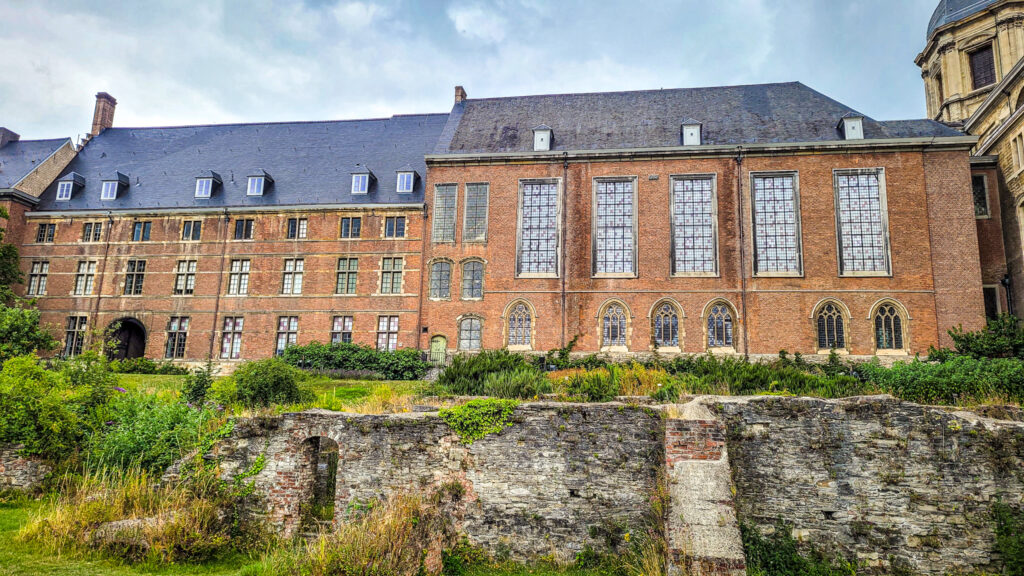
Citadelpark
History of Citadelpark
Citadelpark has a long and fascinating history. It was established in 1875 after an extensive renovation of the now-defunct Citadel of Ghent. The fortress was decommissioned in 1860, and the city decided to convert the area into a public park to enrich the lives of its inhabitants. The park was officially opened in 1880 and quickly became a beloved recreational spot for locals.
Architecture
The architecture of Citadelpark is undoubtedly one of its most captivating features. From the neo-classical bandstand to the Moorish-style pavilions and the Art Nouveau museum of fine arts, the park has an impressive collection of architectural styles. The museums and art galleries located in the park are also a testament to the rich architectural heritage of Ghent. Make sure to visit the Museum of Modern Art. The museum is located in a striking modernist building. The Museum of Fine Arts is housed in a beautiful 19th-century building with a classical façade.
Sculptures and Gardens
The sculptures and gardens of Citadelpark are another highlight of this enchanting park. The park has an impressive collection of sculptures and works of art, such as the famous Jan Hoet sculpture, Sitting Men. The gardens of Citadelpark are an oasis of tranquillity, with their beautiful fountains, charming flower beds, and lush green spaces. Stroll along the winding paths and discover the hidden corners of the park to fully appreciate the beauty of this serene public space.
The Citadelpark offers an array of facilities for visitors to enjoy, including cafes, playgrounds, sports facilities, and picnic areas. Whether you want to enjoy a quiet morning coffee, take your kids to the playground, or go for a run in the park, Citadelpark has something for everyone.
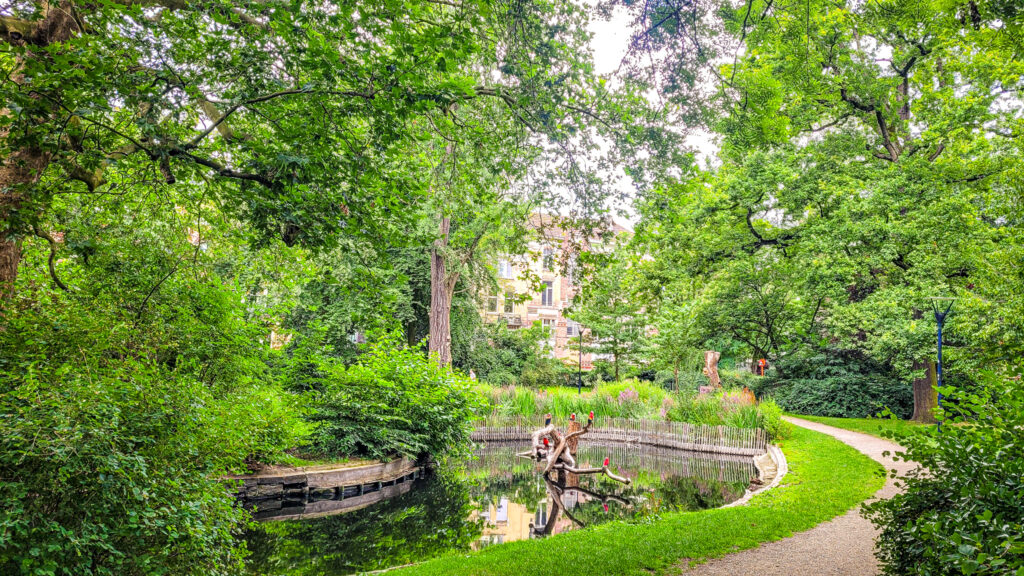
STAM- City Museum of Ghent
STAM, which stands for Stadsmuseum Gent, is a museum that tells the tale of Ghent. The museum explains how the city was transformed into the bustling city it is today. Built-in 2010, the museum is a merger of the Bijloke Abbey and the Caermersklooster monastery. Both are dating back to the 14th century. The building itself becomes an exhibit since it is the essence of modern architecture blending in seamlessly with the exceptional historical building it now occupies.
Exhibits
STAM houses twenty-four galleries, each covering a different aspect of Ghent’s history. The exhibits showcase the archaeological findings of the city, art pieces, and an incredible range of historical objects on display. While visiting the museum, you will be transported through time. You will be walking through streets of Ghent in the Middle Ages and witnessing the city’s evolution over the centuries.
Aside from the impressive displays, STAM provides an engaging experience for visitors of all ages that make it one of the must-visit places in Ghent. Younger visitors can enjoy interactive elements such as role-playing games, storytelling, and puzzle-solving to further enhance the learning and discovery opportunities. There are also professional guides that assist visitors in exploring and discovering Ghent’s wonders. The guides ensure that history lovers and curious minds are fully catered.
The Magnificent Architecture
The architecture of STAM is as striking as the exhibits themselves. The original buildings housing the museum have been preserved, and the newer elements are stunningly contemporary. The museum is an innovative structure that adds to the historical buildings. The use of glass, wood, and steel creates a dynamic contemporary edge, which shines through the historical buildings. The modern design aims to highlight the importance of old architecture, the essence of time, and continuity of living heritage.
Beyond The Museum
STAM’s location offers more than just the museum. The surrounding neighbourhood features some of the most impressive historical landmarks of Ghent. From the magnificent St. Peters’ Abbey to the City Hall and the designer apartments around the river, your afternoon walk can become a stroll through the centuries. Lush gardens, parks, and tranquil canals make it a perfect spot to relax, taking in the atmosphere and beauty of Ghent.
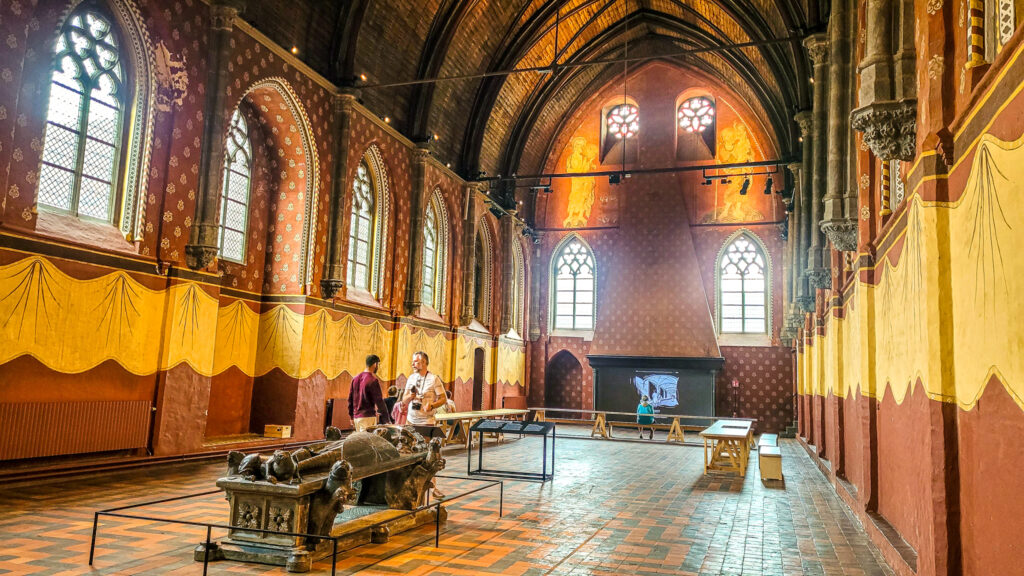
Monumental highlights in Belgium
Belgium, a captivating country waiting to be explored! Despite its small size, it offers an abundance of fascinating sights. Immerse yourself in the medieval charm of Bruges and Ghent, or discover the birthplace of Rubens in Antwerp. Did you know that Antwerp has 5 monumental churches?
Nature enthusiasts mustn’t miss the breathtaking Ardennes or embark on a day hike at Kalmthoudste Heide, nestled between Antwerp and the Netherlands. If visiting Brussels in the spring, seize the opportunity to explore the enchanting Serres of Laeken. The serres are open to visitors for just 6 weeks each year. And for history buffs, Ypres and the Flanders Fields provide a poignant journey through the events of the Second World War. Get ready to experience the allure of Belgium!
